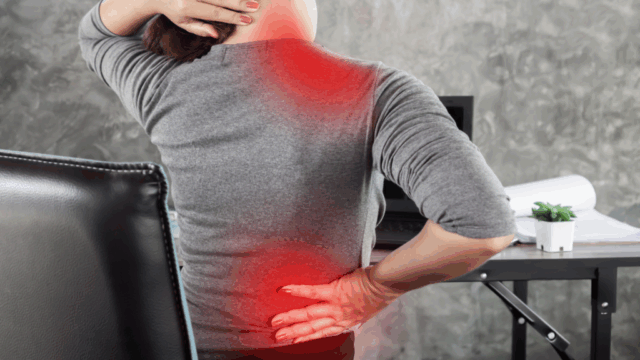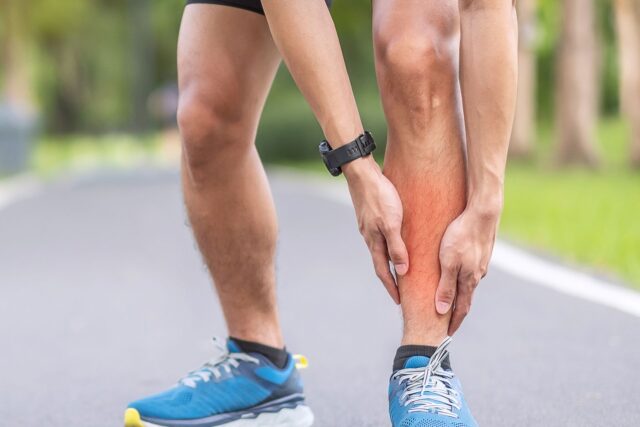Trigger Points and Fascia Pain
Muscle discomfort and stiffness are common complaints among both active individuals and those with desk-bound lifestyles. One of the most overlooked causes of persistent muscle tightness and discomfort comes from trigger points and fascia pain.
Trigger points are small, tight knots that form in muscles and connective tissues (called fascia). These areas can cause local pain or even refer pain to other parts of the body. Understanding how trigger points and fascia work together helps patients identify the source of discomfort and explore effective, non-surgical ways to relieve it.

Why Do People Experience Trigger Points and Fascia Pain?
Many people experience tightness or deep aching in their neck, shoulders, or lower back without an obvious injury. This often happens due to muscle overuse, poor posture, or repetitive movement. When muscles stay tense for long periods, blood flow decreases, leading to areas of tightness called trigger points.
The fascia — a thin layer of connective tissue surrounding muscles — also plays a major role. When fascia becomes restricted or inflamed, it limits movement and contributes to a pulling sensation or general stiffness. Together, trigger points and fascia restriction can create discomfort that affects your daily life, from working at a desk to playing sports.
Common examples include:
- Shoulder and neck tightness from computer or mobile phone use.
- Lower back pain after long hours of sitting.
- Leg or calf tightness in runners or athletes.
- Jaw or facial tension related to stress or clenching.
What Causes Trigger Points and Fascia Pain?
Several factors contribute to the development of trigger points and fascia discomfort. Often, it’s not a single cause but a combination of lifestyle and physical stressors.
Causes include:
- Poor posture: Slouching or sitting for long hours strains certain muscles repeatedly.
- Overuse injuries: Repetitive motions in sports or work can lead to muscle fatigue and tension.
- Lack of movement: Limited stretching and prolonged inactivity reduce blood flow to muscles.
- Stress and tension: Emotional stress can increase muscle tightness and sensitivity.
- Previous injury: Scar tissue or old strains can affect how muscles and fascia move together.
Because trigger points can form in almost any muscle, they may cause pain that feels sharp, aching, or even dull. In some cases, discomfort from one area may radiate elsewhere — for example, pain from shoulder trigger points can be felt along the neck or upper arm.
Common Symptoms of Trigger Points and Fascia Restriction
Recognising the signs early can help prevent chronic discomfort. Common symptoms include:
- Localised muscle pain or tenderness.
- A “knot” or tight band that can be felt under the skin.
- Stiffness or restricted movement in the affected area.
- Pain that radiates or spreads to nearby regions.
- Muscle fatigue, even after mild activity.
Over time, untreated trigger points can affect mobility and posture. Therefore, identifying and addressing these issues early can make recovery faster and more effective.
How Do You Relieve Trigger Points and Fascia Pain?
At SportDoctor Singapore, Dr. Dinesh focuses on non-surgical, evidence-based approaches to relieve muscle and fascia discomfort. Treatment begins with a careful assessment to identify the source of tension — whether it’s a specific muscle group or a larger area of fascial restriction.
Depending on the patient’s needs, management may include:
- Ultrasound-guided interventions to target affected areas precisely.
- Manual release techniques to improve mobility and circulation.
- Exercise prescription to restore muscle balance and prevent recurrence.
- Lifestyle advice to correct posture, movement patterns, and ergonomics.
Every plan is personalised based on your specific condition and activity level. The goal is to help reduce pain, improve flexibility, and restore normal muscle function safely.

When to Seek Help
If you experience ongoing stiffness, deep aching muscles, or pain that limits your movement, it may be time to seek professional advice. Early evaluation can make treatment more effective and prevent the discomfort from becoming chronic.
Many patients find that addressing trigger points and fascia restriction not only relieves pain but also enhances performance and recovery in daily life and sports.
Why Choose Dr Dinesh in Singapore
Dr. Dinesh Sirisena brings extensive experience in sports and musculoskeletal medicine, helping patients regain movement through safe, non-surgical solutions. Each treatment is performed with precision and supported by the latest medical imaging techniques.
Whether you’re an athlete or simply looking to move without pain, Dr. Dinesh’s goal is to help you recover naturally and confidently.




















